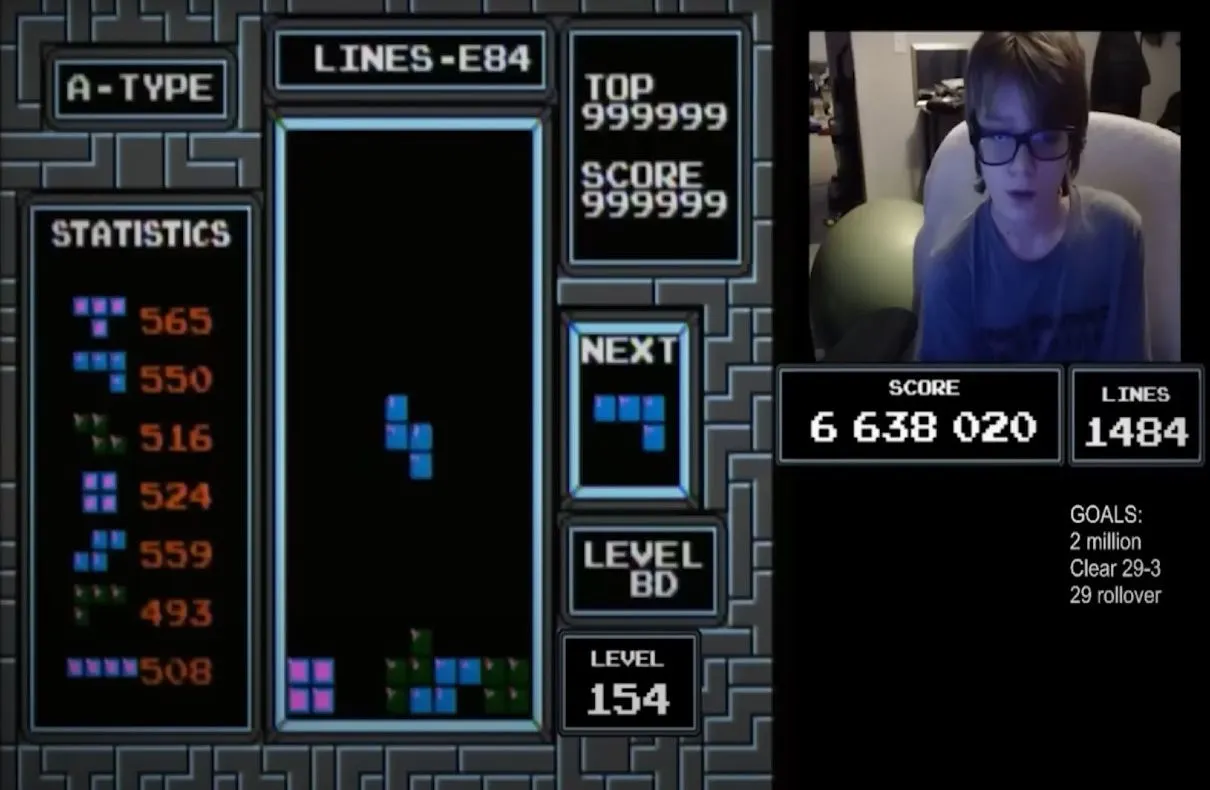
Willis Gibson, a 13-year-old American, is the first person to beat the classic Nintendo game Tetris. Gibson, who also goes by the screen name “Blue Scuti”, reached level 157 before forcing the game into a “kill screen”. A “kill screen” is a type of ending that occurs when the game technically surrenders
Gibson’s achievement is considered groundbreaking because it was previously thought to be impossible for humans to reach the “kill screen”. Many players consider Tetris unbeatable because the game doesn’t have a scripted ending.
Gibson dedicated his win to his father, who died last month. In a YouTube video of the win, Gibson can be heard screaming and saying, “I can’t feel my fingers”. Until, that is, Willis managed to trigger a kill screen at level 157 on December 21, which the gaming world took as a victory over the game – something along the lines of pushing the software beyond its limits.
The creators of Tetris agree. “Congratulations to ‘Blue Scotty’ on achieving this extraordinary feat, one that shatters all preconceived boundaries for this great game,” Tetris CEO Maya Rogers said in a statement. Rogers said that Tetris will celebrate its 40th anniversary this year and called Willis’s win a “monumental achievement”.
Emirates Air Hostess Tries Apple Vision Pro on Flight: A Game-Changing Experience
It has been a very long road. Early on, “people in the Tetris scene didn’t even know how to get to these higher levels,” said David MacDonald, a gaming YouTuber who has chronicled the gaming industry for years.
“They were just stuck in their 20s and 30s because they didn’t know the techniques to move forward.” Level 29 posed a particularly difficult obstacle as the blocks began falling faster than the in-game controller could respond.
Players eventually found ways to progress, as MacDonald explains in his detailed video on Willis’ win. In 2011, level 30 was reached using a technique called “hypertapping”, in which a player could rhythmically vibrate their fingers to move the game controller faster than the game’s inherent speed. That technique took players to level 35 until 2018, after which they hit a wall.
The next big thing came in 2020 when a gamer combined the multifinger technology originally used in arcade video games by combining one finger at the bottom of the controller and pushing it against another finger at the top. This faster approach, called “rolling,” helped one player reach level 95 in 2022.
Then other obstacles arose. Because the original Tetris developers never trusted players pushing the game’s boundaries so aggressively, strange quirks began to emerge at higher levels. A particularly difficult problem arose with the game’s color palette, which traditionally cycles through 10 easily recognizable patterns.
However, starting at level 138, random color combinations began to appear – some of which made it very difficult to distinguish the blocks from the game’s black background.
Two particularly devilish patterns – one a blurry combination of dark blue and green later dubbed “Dusk”, the other composed of black, gray and white blocks dubbed “Charcoal” – proved difficult for players. When this was combined with the pressure of long games lasting 40 minutes or more, progress slowed again. A Tetris-playing AI program called StackRabbit helped break the logjam where players would encounter glitches, resulting in a kill screen, and ultimately beat the game.
StackRabbit, who managed to reach level 237 before the game crashed, ran on a modified version of Tetris, so its achievements are not exactly comparable to those of human players. And its findings don’t immediately apply to games played by humans either. But its run clearly demonstrated that game-ending glitches could arise from very specific events, such as which block pieces were in play or how many lines a player crossed at once.
Humane’s Ai Pin offers an intriguing concept and shows great potential
This left human players tasked with mapping out all the possible scenarios that could have caused such crashes in the original game. This usually results when the game’s decade-old code loses its place and starts reading its next instructions from the wrong location, usually resulting in garbage input.
A major effort inspired by StackRabbit’s experience ultimately resulted in the compilation of a large spreadsheet detailing which game levels and under what specific circumstances were most likely to cause a crash.
This is what compelled Willis to run for the record. Yet even they were shocked when the game crashed at level 157. In his livestream video, he is seen hyperventilating before gasping, saying “Oh my God” several times, holding his temples and worrying that he will faint. After placing his hands over his mouth in an apparent attempt to control his breathing, he eventually yells, “I can’t feel my fingers.”
